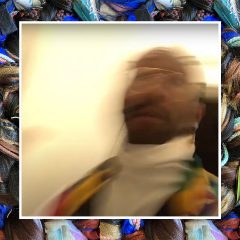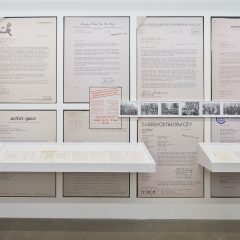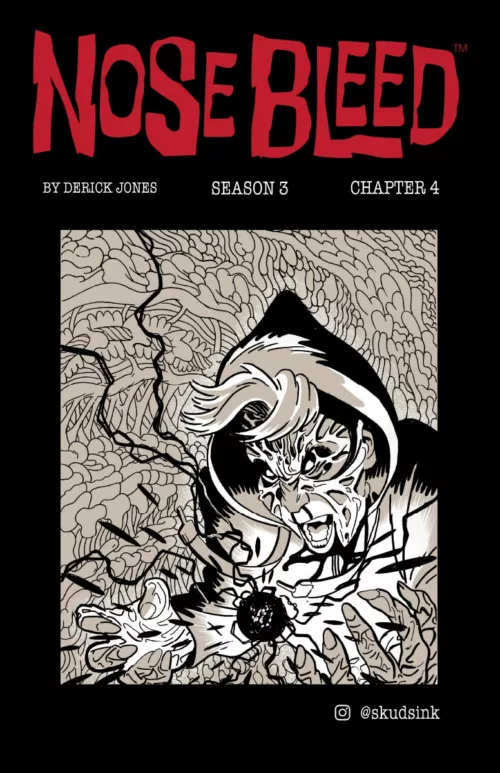[Joshua reviews painter Richard Gabriele’s first show at Fred Torres Gallery. Gabriele, who lives and works in Bucks County, often uses animal symbolism to meditate on themes of human experience and mythology. — the Artblog editors]
The works of Richard Gabriele currently fill the small Fred Torres Gallery with rich and colorful symbols and images, in a show titled Gathering the Scattered. The show, located in Chelsea, demonstrates the development of symbols in Gabriele’s work over the past several years–mapping his progression from simple symbolism to complex allegory. The exhibition includes a variety of drawings, watercolors, and oil paintings with images of birds, figures, and abstract forms.
Inspiration for Gabriele’s work lies with Morris Graves, an American Expressionist painter who was known for paintings in which the spiritual qualities are as important as the formal ones. Graves found that painting in such a way sought the transcendental. In starting the Morris Graves Foundation, Graves left a legacy of visionary art to future generations of artists and viewers–among them, Richard Gabriele. Completing two fellowships under the auspices of the Morris Graves Foundation, Gabriele discovered a way of painting that balances his personal thoughts and outer experiences, allowing him to express visions of things he sees, whether those exist in the world of real phenomena or the world of his own mind.
More than meets the eye
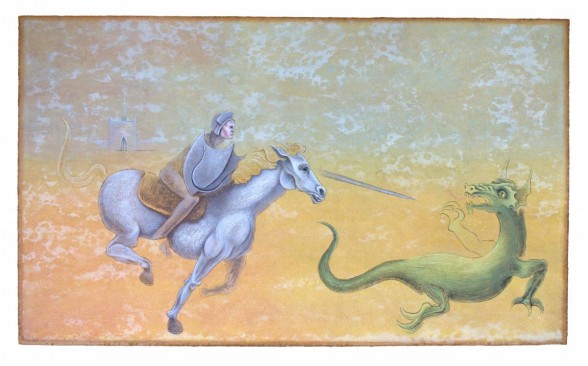
If Gabriele had to be pigeonholed as a type of artist, symbolic-animalier would suffice. Although he is adept at realistically painting animals, he also uses symbolism to further bolster the underlying meaning of his work. Gabriele refers to symbolism as a mysterious language that allows him to say more than he can with words. Speaking about the exhibition, he said, “Certain feelings are like familiar places in my soul, and art is a way of finding the way back.” Through his use of symbolism, Gabriele achieves a meditative state of contemplation, making the viewer ponder the larger implications of the symbols at play and how they bolster the subject or theme of each individual piece, as well as the show as a whole.
Gabriele makes reference to various biblical stories, such as St. George and the Dragon, and the Prodigal Son. In both of these tales, animals serve as symbols to emphasize a moral: The dragon serves as the ultimate symbol of the devil, while pigs symbolize the Prodigal Son’s greed and also refer to the son’s time serving as a swineherd after wasting away his inheritance.
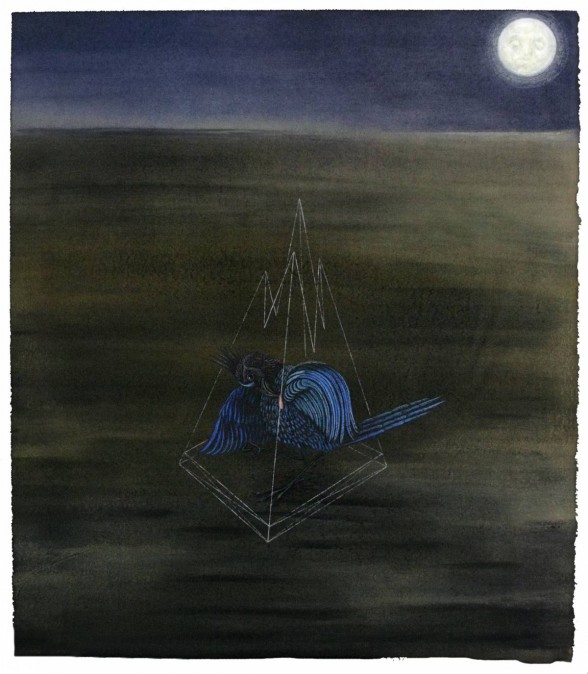
In “Restless Steller’s Jay” (2008), a constructed geometric figure traps a Steller’s jay, a relative of the blue jay native to North America. Bold and inquisitive, in nature the Steller’s jay has a penchant for investigating, adapting, and learning new ideas. It is not only resourceful, but adaptable. Yet the bird in this painting rests, trapped. The deep blue mirrors this moment, embodying both the power of the bird and the sadness of its restraint.
Universal concepts
Despite the subject or mood of a particular piece, what is consistent in Gabriele’s oeuvre is color: His works are saturated in pure color, creating an overwhelming and almost surreal mood. In many cases, the arresting color pulls the eyes in, making the subjects of the pieces an afterthought.
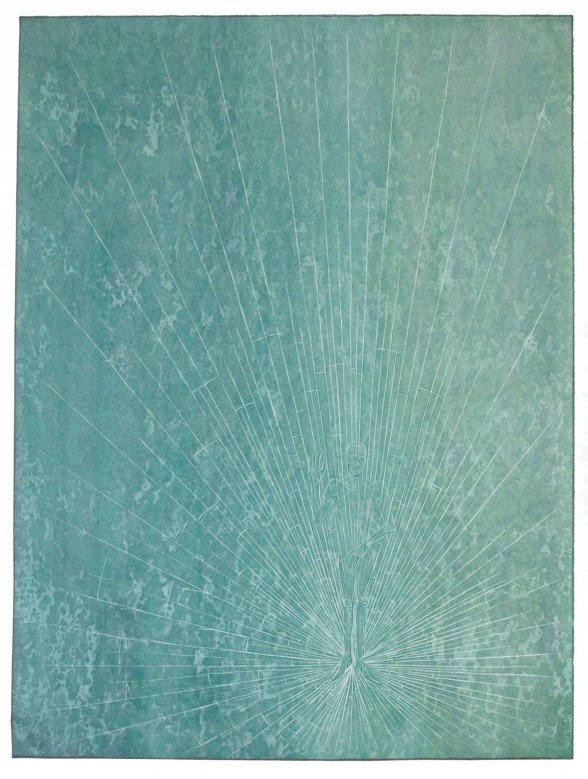
With no reference to an animal, “Purusha Says Hi” (2010) seems to be an odd and anachronistic choice as the centerpiece for this exhibition. However, in understanding what “Purusha” means, the choice becomes evident: Purusha is a Hindu concept that refers to the soul of the universe and the Self. The painting mirrors this dichotomy, highlighting both the fragmentation and the unification of the world with an image of many pieces of glass that fit together to form a whole. The title of the exhibition, “Gathering the Scattered,” is born from the same idea and takes on additional meaning with the exhibition of Gabriele’s works from the past decade.
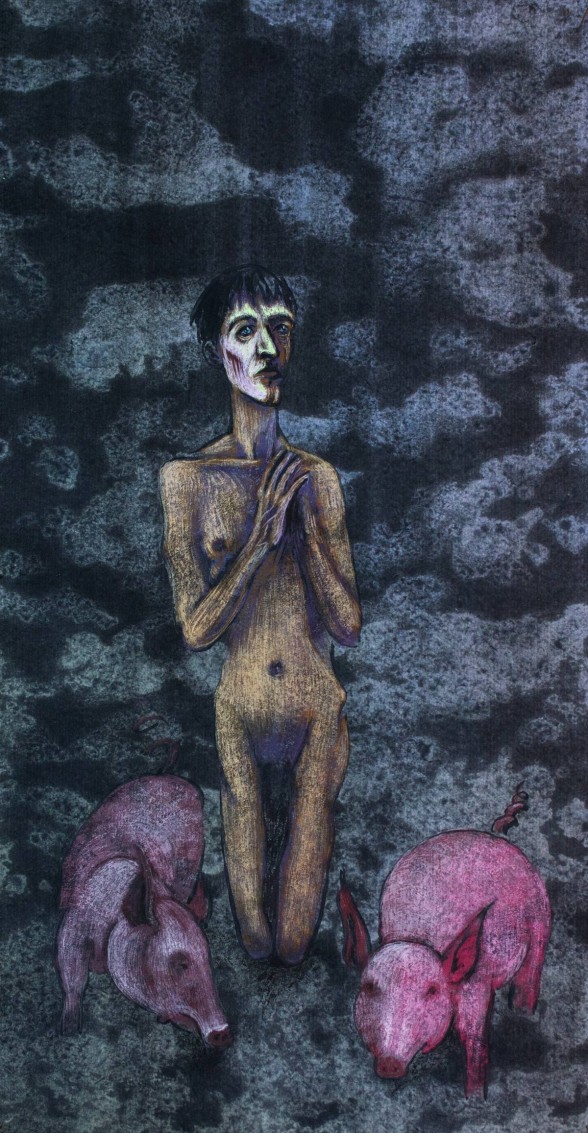
Overall, Gabriele’s work is very engaging. In a gallery bathed in light (augmented by the stark white interior), his works still managed to shine through. The pieces–though each is incredibly different from its neighbor–come together as a unified whole. Whether a work of portraiture, of pure symbolism, or of allegory, Gabriele’s work is sure to be contemplative and make the viewer pause.
Born in Philadelphia in 1982, Gabriele attended Haverford College, where he graduated with a B.A. in fine arts and art history. He continued on to receive his M.F.A. in painting from the Pennsylvania Academy of Fine Arts. Gabriele currently lives and works in Bucks County, Pennsylvania. He has exhibited widely around the United States, and Gathering the Scattered is his first exhibition at Fred Torres Gallery.
Gathering the Scattered will be on view at Fred Torres Gallery, 505 W. 25th St., New York, NY, through April 11, 2015. The gallery is open to the public Tues. – Sat. from 10 am to 6 pm. A limited run of autographed exhibition catalogues are for sale, featuring an essay by art historian Peter Selz. For more information, please contact gallery liaison Destiny Hall at destinyhall@fredtorres.com.



